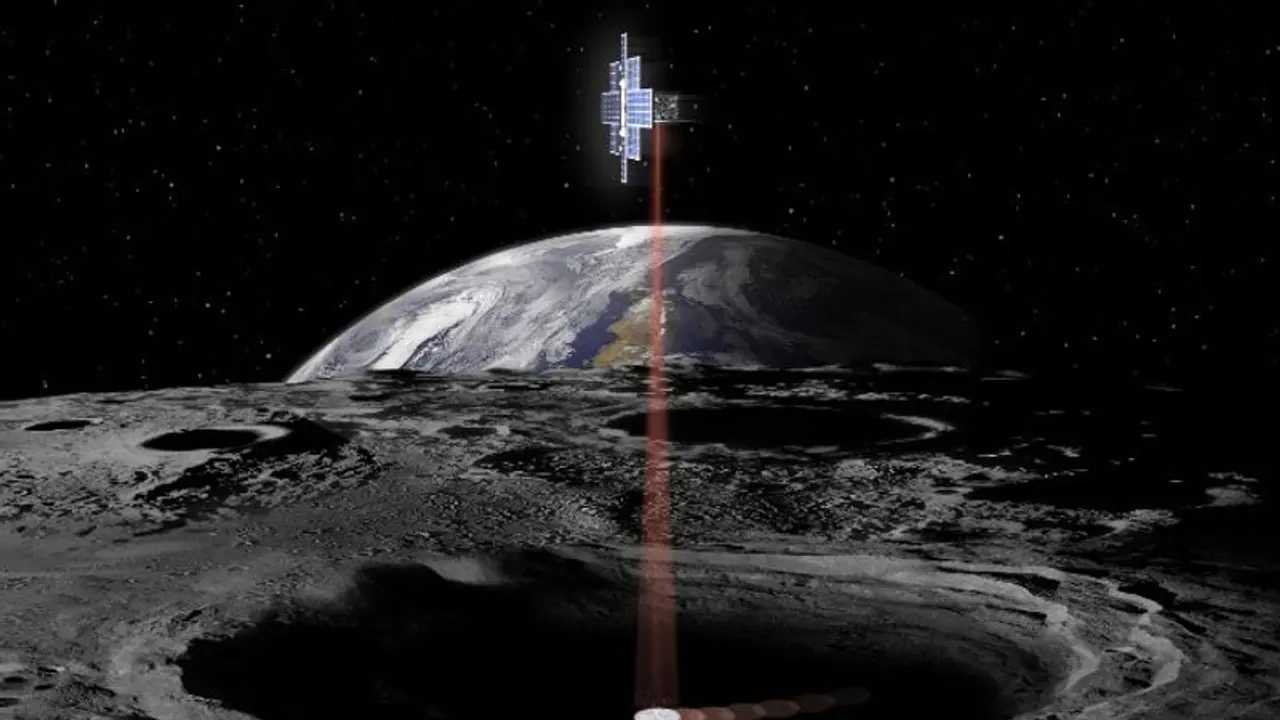'Lunar Flashlight’s four-laser reflectometer will use near-infrared wavelengths that are readily absorbed by water to identify any accumulations of ice on the surface of the Moon'
Washington: NASA, the US space agency is sending a small satellite (Lunar Flashlight) to detect naturally occurring surface ice believed to be at the bottom of craters on the Moon that nave never seen sunlight.

The small satellite, also known as a CubeSat, over the course of two months, will swoop low over the Moon’s South Pole to shine its lasers into permanently shadowed regions and probe for surface ice, National Aeronautics and Space Administration (NASA) said.
Also read: Top US doctor treating coronavirus patients commits suicide
It added, Found near the North and South Poles, these dark craters are thought to be “cold traps” that accumulate molecules of different ices, including water ice. The molecules may have come from comet and asteroid material impacting the lunar surface and from solar wind interactions with the lunar soil.
“Lunar Flashlight’s four-laser reflectometer will use near-infrared wavelengths that are readily absorbed by water to identify any accumulations of ice on the surface. Should the lasers hit bare rock as they shine into the South Pole's permanently shadowed regions, their light will reflect back to the spacecraft, signaling a lack of ice. But if the light is absorbed, it would mean these dark pockets do indeed contain ice. The greater the absorption, the more widespread ice may be at the surface,” the space agency explained.
Also read: Pentagon declassifies UFO videos
“Although we have a pretty good idea there's ice inside the coldest and darkest craters on the Moon, previous measurements have been a little bit ambiguous,” said Barbara Cohen, principal investigator of the mission at NASA’s Goddard Space Flight Center in Greenbelt, Maryland. “Scientifically, that's fine, but if we're planning on sending astronauts there to dig up the ice and drink it, we have to be sure it exists.”
What is Lunar Flashlight?
Roughly the size of a briefcase, Lunar Flashlight is a very small satellite being developed and managed by NASA’s Jet Propulsion Laboratory that will use near-infrared lasers and an onboard spectrometer to map ice in permanently shadowed regions near the Moon's south pole. The observations made by the low-cost mission will provide unambiguous information about the presence of water ice deposits inside craters that would be a valuable in-situ resource for future Artemis missions to the lunar surface.
What is Artemis programme?
With the Artemis programme, NASA will land the first woman and next man on the Moon by 2024, using innovative technologies to explore more of the lunar surface than ever before. We will collaborate with our commercial and international partners and establish sustainable exploration by 2028. Then, we will use what we learn on and around the Moon to take the next giant leap – sending astronauts to Mars.
